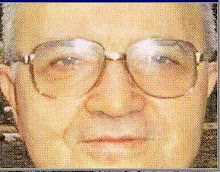by Jeff Thurston
All things change over time. This includes geographic information systems (GIS), computer aided design (CAD), global positioning systems (GPS), remote sensing, surveying and a wide array of geospatial technologies and applications. What I would have said to someone embarking on a spatially related career ten years ago would be different than what I would say today. Some things have changed dramatically, others in new ways and some minimally. Here is what I’d say today to someone contemplating a geo-career, in no particular order.
1) GNSS is an integration of GPS satellite systems. You can actually use a GNSS receiver today and get excellent results. If you thought one GPS was good, then 2 or 3 are going to really open your eyes. GNSS is going to revolutionise all we know about location based services. It will create a whole new class of professionals interested in position and navigation.
2) GIS is the de facto integrator of spatial information. Focus on it. Learn how all other technologies are spokes leading toward its integration. If you understand it as existing on a level equivalent to business systems then you will have the power to strategically drive new business applications and directions.
3) 3D is the future. It is not just about data though, it is also about visualisation. Start using the phrase ‘elegant solution.’ Pay attention to the concept of ‘Digital Cities.’
4) Sensing will increasing play a role that is supported through legislation. Data matters and numbers matter. Carbon credits become a currency, for example, and geotechnologies the stock exchange. I can’t say enough about understanding monitoring and it’s linkage to geospatial technologies. The current economic crisis will eventually lead to transparency and more of it.
5) Our concept of time is not well defined in spatial technologies. We can do scheduling well, but being able to understand ‘change over time’ is becoming more meaningful. It also relates closely to real-time versus static operating environments.
6) Remotely sensed imagery will become more widely used. More satellites equal more data. But other new satellites are now going to be providing information about CO2, NOx, global soil information and so on. Linking those satellite data to imagery will mean projects become larger, involve more people and take on the character of spatial data infrastructure (SDI).
7) I can’t help but think that we heading toward a major shift in energy use, production and utilisation. The way I see it, oil and gas together with wind, solar and biofuels etc. will require a balanced approach with feedback loops to operational building systems, social factors and other impacts. We’re about to enter a more holistically oriented and managed energy scenario. This goes back to integration - GIS.
8 ) Think communities. Better and more efficient housing located near better and more efficienct tranportation systems.
9) Learn to write. Develop communication skills. Many of our colleagues tell me, “I wish I could write.” It will help you to share and collaborate on all the integration going on.
10) Find a mentor. A person who would agree to work with you as your career develops and who you would invest a time commitment toward. It can be daunting when starting out and many people can help you to get up to speed quickly. If you want a mentor, then simply ask them. But know what you are asking and be prepared to listen.
RESURSE INTERACTIVE GRATUITE PENTRU UZ DIDACTIC
26.05.2009
Abonați-vă la:
Postare comentarii (Atom)


0 comentarii:
Trimiteți un comentariu